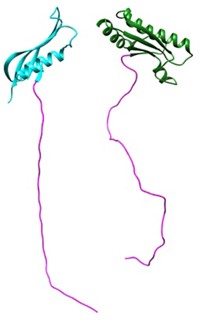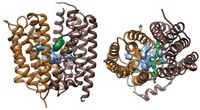Advertisement
Grab your lab coat. Let's get started
Welcome!
Welcome!
Create an account below to get 6 C&EN articles per month, receive newsletters and more - all free.
It seems this is your first time logging in online. Please enter the following information to continue.
As an ACS member you automatically get access to this site. All we need is few more details to create your reading experience.
Not you? Sign in with a different account.
Not you? Sign in with a different account.
ERROR 1
ERROR 1
ERROR 2
ERROR 2
ERROR 2
ERROR 2
ERROR 2
Password and Confirm password must match.
If you have an ACS member number, please enter it here so we can link this account to your membership. (optional)
ERROR 2
ACS values your privacy. By submitting your information, you are gaining access to C&EN and subscribing to our weekly newsletter. We use the information you provide to make your reading experience better, and we will never sell your data to third party members.
Analytical Chemistry
Membrane Protein Network Expands
Proteomics: Study more than doubles known interactions of yeast membrane proteins
by Celia Henry Arnaud
September 10, 2012
| A version of this story appeared in
Volume 90, Issue 37

A Canadian team of researchers reports the first comprehensive survey of interactions between membrane proteins and other proteins in yeast, including many that have never been identified before (Nature, DOI: 10.1038/nature11354). The interactions of membrane proteins have been consistently missed in previous surveys of protein-protein interactions. Because many membrane proteins are drug targets, the oversights represent a big knowledge gap.
The new study, led by Jack F. Greenblatt, Andrew Emili, and Shoshana J. Wodak of the University of Toronto and Elizabeth Conibear of the University of British Columbia, more than doubles the number of known interactions of yeast membrane proteins with other proteins.
A key obstacle to identifying interactions of membrane proteins has been getting the proteins out of the membranes, Greenblatt says. The process requires detergents that can solubilize the proteins without disrupting interactions.
“You can’t predict which detergent is going to be best for a given complex,” Greenblatt says. For the study, he and his coworkers purified each target membrane protein with each of three different detergent solutions. Using mass spectrometry, they then analyzed the purified membrane proteins and their interaction partners.
They identified 1,726 interactions, 1,110 of which had never been seen before, Greenblatt says. The other 616 interactions had previously been reported. They suspect that even more interactions remain to be found.
“Greenblatt and colleagues have plowed a rocky field for all of us who want to chart protein-protein interactions with membrane proteins,” says Steven P. Gygi, a professor of cell biology at Harvard Medical School. “They did nice work to define three detergent mixes that were used to vastly improve what we knew before about yeast membrane protein interactions.”





Join the conversation
Contact the reporter
Submit a Letter to the Editor for publication
Engage with us on Twitter